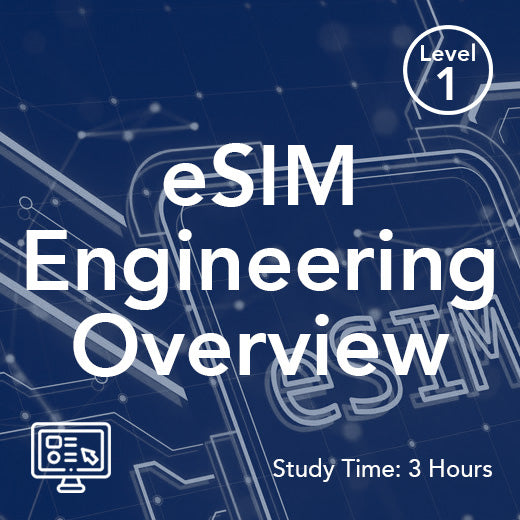5G Standalone Architecture Explained
- , by Stephanie Burrell
- 5 min reading time
5G Standalone Architecture Explained
-
January 31 2025 , by Stephanie Burrell
-
2 min reading time
The arrival of 5G standalone architecture (5G SA) marks a pivotal advancement in the evolution of mobile connectivity, moving beyond the transitional phase of non-standalone (NSA) deployments that relied on 4G LTE infrastructure. As industries and consumers alike embrace the transformative capabilities of 5G, standalone architecture has emerged as the backbone of next-generation connectivity, enabling unmatched levels of flexibility, speed, and performance across a wide array of use cases—from industrial automation and smart cities to immersive video streaming experiences.
At its core, 5G standalone architecture allows the 5G network to operate independently of legacy 4G infrastructure. This shift enables operators to build a fully native 5G network with its own 5G radio access network (RAN) and 5G core (5GC). The result is a truly next-generation system with drastically reduced latency, increased bandwidth, and support for advanced features such as network slicing, edge computing, and massive machine-type communication (mMTC).
What Makes 5G Standalone Different?
Unlike NSA 5G, which uses 4G LTE for control signaling while only the data path runs through 5G, 5G SA operates without any dependence on 4G systems. This standalone setup enables full access to 5G’s capabilities, offering network operators complete control over their network operations and the ability to deploy services with greater efficiency.
With a more modular and service-oriented architecture, standalone 5G provides a foundation for new business models and digital services. From pay monthly plan offerings that include tiered service levels based on speed and latency, to enterprise-grade solutions with guaranteed quality of service, 5G SA opens the door to extensive innovation.
Key Features of 5G Standalone Architecture
1. Lower Latency and High Reliability
5G SA dramatically reduces round-trip latency, often to below 10 milliseconds. This is essential for real-time applications such as remote medical procedures, connected robotics in smart factories, and autonomous vehicles. The architecture is also built with network resiliency and high reliability in mind, ensuring consistent performance even in highly dynamic environments.
2. Massive Machine-Type Communication (mMTC)
One of the three primary service categories in 5G, massive machine-type communication, is natively supported in standalone architecture. This enables the connection of billions of low-power, low-data-rate devices, such as sensors and meters in smart cities, without overloading the network. Whether monitoring traffic patterns or tracking utility usage, mMTC in SA networks supports the seamless operation of vast IoT ecosystems.
3. Network Slicing for Tailored Services
Network slicing allows mobile operators to create multiple virtual networks on a single physical infrastructure. Each "slice" can be optimized for a different use case—for example, one slice for ultra-low latency video streaming, another for enterprise cloud connectivity, and another for mission-critical public safety communications. This ability to dedicate slices with custom-defined performance parameters provides unmatched versatility in delivering specialized services.
4. Edge Computing Integration
Edge computing is tightly coupled with 5G SA, pushing data processing closer to the user or device. This drastically reduces the distance data must travel, which lowers latency and improves responsiveness for latency-sensitive applications like real-time AR/VR, gaming, and remote drone operation. By integrating edge computing into network operations, operators can also reduce backbone traffic and improve the efficiency of service delivery.
Device Compatibility and Adoption
To fully benefit from 5G SA, users need a compatible device—a smartphone or connected device specifically designed to support standalone mode. While many devices sold in the early 5G era only supported NSA configurations, modern handsets increasingly ship with full SA compatibility.
Choosing the right compatible device ensures users get the most out of new 5G features, including ultra-fast downloads, superior video streaming, and reduced latency for cloud applications. Some pay monthly plans now clearly indicate whether they include access to standalone 5G services, as carriers begin to differentiate between NSA and SA-based offerings.
Applications in Smart Cities and Emerging Sectors
5G standalone architecture is an enabler of smart cities, where real-time data sharing and analysis are fundamental to services like traffic management, environmental monitoring, and public safety coordination. With mMTC and ultra-reliable communication features, SA networks empower city infrastructure to become more efficient, automated, and citizen-centric.
Other sectors benefitting from 5G SA include:
-
Healthcare: Remote surgery and diagnostics with millisecond-level responsiveness
-
Automotive: Vehicle-to-everything (V2X) communication for road safety and automation
-
Logistics: Real-time tracking and warehouse automation
-
Entertainment: Low-latency video streaming, cloud gaming, and immersive VR/AR experiences
A Shift in Network Operations and Strategy
The implementation of standalone 5G architecture also represents a significant evolution in network operations. Operators now manage fully virtualized network functions, automated service orchestration, and AI-driven performance optimization. This agility allows them to scale rapidly, launch services faster, and tailor network behavior in real time based on demand.
Moreover, SA deployment enables slicing-based monetization strategies, where enterprises can pay for dedicated, SLA-backed network slices—ushering in an entirely new era of customizable mobile services.
Conclusion
5G standalone architecture is more than just the next phase of mobile evolution—it’s a transformational leap toward a hyper-connected world. With support for edge computing, network slicing, massive machine-type communication, and ultra-low latency, 5G SA delivers the infrastructure needed for tomorrow’s applications and services.
For consumers, it means smoother video streaming, more responsive applications, and access to powerful services with a compatible device. For enterprises and cities, it means smarter operations, better resource management, and innovative service delivery.
As adoption grows and more carriers offer pay monthly plans that include access to SA capabilities, 5G standalone architecture will become the gold standard—redefining what we expect from mobile connectivity and setting the stage for the intelligent, interconnected future ahead.






















